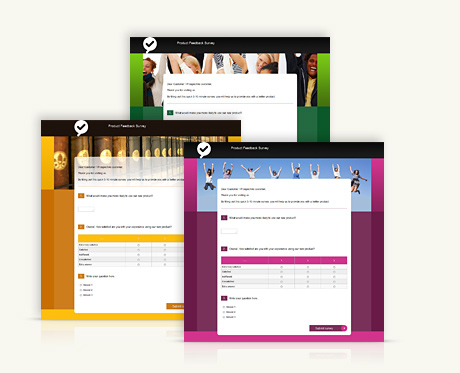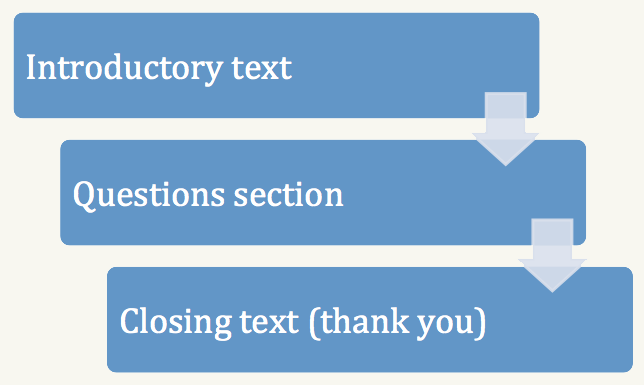What’s the Right Way to Create a Questionnaire?
With this introductory article, we’re opening up a new three-part block on the topic “What’s the Right Way to Create a Questionnaire?” This is a continuation of our major series on quantitative research. Here we’ll be discussing the right way to create a questionnaire. We’ll explain the basics and the principles to you and advise you on how to easily draft and create your own questionnaire.
What Is a Questionnaire, Actually?
A questionnaire is a data collection method for quantitative research. A questionnaire means a form—which might be made of paper, or might be made of electrons. Using this form, information is gathered for respondents, who fill the form out. A questionnaire is a very simple tool for market research, product evaluation, determining satisfaction levels, and investigating many other areas (here are the most frequent types of online questionnaires).
Examples of online questionnaires:
- Customer Satisfaction Survey, Service Cancellation Survey
- 360 Degree Feedback Survey, Employee Performance Survey
- Service Feedback Survey, Buying Experience Survey, Product Pricing Survey
The Basic Data Collection Methods
- Quantitative content analysis (of a printout or documents).
- Standardized comparison – the observer examine a specific respondent during normal or specialized activities. The researcher records important data.
- Standardized interview – the questioner holds an in-depth interview with respondents to determine the needed data.
- Secondary analysis of collected data – secondary work with already-collected data. This is mainly done using statistical software, where individual results are compared with other results.
A questionnaire an efficient, simple, and above all inexpensive way to obtain valuable information that you need from your respondents.
Before you start creating a questionnaire, you should define your research questions, your hypotheses, and the variables that you want to cover through it. We discuss the topic of formulating research problems in the second part of this series.
Where and How Should You Create Your Survey?
There are many ways to create a questionnaire survey. The main important factors are the funds you have available and your requirements for the scope and depth with which its answers are processed. The methods are most often broken down into the three groups covered in our article Online Survey Tools: Why Should You Use Them. These are:
- Creating a survey for a printed form in a text editor
- Programming a custom online survey
- Using online survey creation tools
Online survey creation tools are the most frequently used tool today. Since they’re specialized for the job, they make survey creation very easy, and both laymen and professionals can work with them well. Both free and paid types exist.
- Free survey tools have certain limitations. Free tools are usually time-limited or have feature restrictions. For example they only let you create a limited number of surveys, or they only let you record and process a limited number of answers.
- Paid systems—these are made for intensive use by either students or professionals. These types of tools usually have no limitations on time, response count, or features. They also offer the strongest security and data backup.
Every good online survey system should be able to both create a survey and distribute it. The main prerequisite for a good tool is that it be able to collect answers and automatically process them in tables and graphs. You’ll also appreciate modern features like the ability to place surveys on Facebook, on your website, or on your e-shop.
The advantage of online survey tools such as Survio is that they make it easy to design a survey using templates, and to automatically evaluate it. Try Survio!
Supplementary Survey Texts
In the upcoming parts, we’ll explore how to write questions. But before that, here are a few words on supplementary texts (introductory and concluding/thanks texts).
We recommend that you create high-quality text for the beginning and end of each survey. In your introductory text, always try to to describe the area you’re trying to cover in the survey, what you’ll be wanting from the respondent, and of course how long it will take to fill out. That way, your respondents will have a clear idea of what’s expected of them. That increases their likelihood of wanting to fill out your survey.
In your conclusion, always thank the respondent and let them know how, and for what purposes, their answers will be used.
In the next part, we’ll take a closer look at survey question types and their specifications.
If you have any questions, suggestions, or comments about this series or anything else, don’t hesitate to contact us via Facebook, Twitter, G+ or e-mail.
Glossary
- Hypothesis – an expectation for research (can be confirmed or denied)
- Variable – a measured property that we can use to express a specific value
- Respondent – a research subject who answers questions
Create your own questionnaire or survey for free
Setting up your first survey is quick and straight forward. Choose from one of 100 predefined templates or create your own from the scratch. Start getting your first responses in 5 minutes.
Create your own survey






